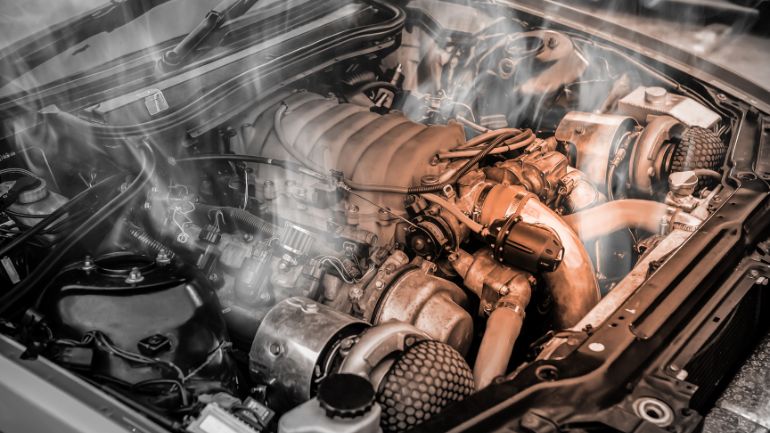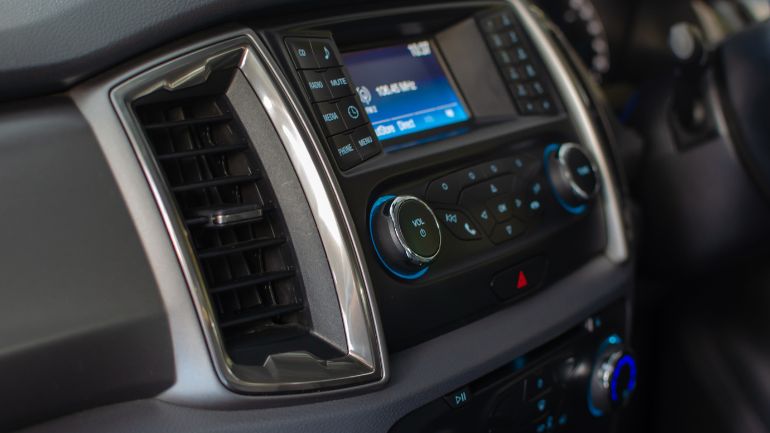The automotive cooling system is comprised of a radiator, fan, fan belt, thermostat, and water pump. Each component plays a major role in keeping the engine cool. Do your car’s cooling fans only work when temp sensor is unplugged? The culprit is generally a faulty temperature sensor.
To diagnose the issue, I invested time in learning the ins and outs of the automotive cooling system. When functioning at the maximum level, the cooling system maintains between 195 and 220 degrees Fahrenheit. Otherwise, the car will overheat.
Table of Contents
- Cooling Fans Work When Temp Sensor Is Not Plugged In
- How Does Automotive Cooling System Function?
- Dangers Of Overheating
- Faulty Cooling Fan Module
- What Does The Temp Sensor Do?
- When Does The Radiator Fan Turn On?
- Why Is The Cooling Fan Not Turning On?
- Checking The Cooling Fan
- Symptoms Of A Problematic Temp Sensor
- Fixing A Faulty Temp Sensor
- Reducing The Risk Of Overheating
- Frequently Asked Questions
Cooling Fans Work When Temp Sensor Is Not Plugged In
What if the cooling fans only work when temp sensor is unplugged? On most vehicles, the temperature switch makes the fan turn on and off.
To determine whether the sensor is the problem, you’ll need to unplug it. Some vehicles have three, including one for the warning light, another for the PCM, and one for the overhead console.
If the coolant temperature sensor has been unplugged, the fan should spin. The PCM will detect a switch failure and log a Diagnostic Trouble Code. Then, the fan should turn.
If this doesn’t happen, your vehicle may have an open coolant temperature switch. This means that it remains open until the coolant reaches a specific temperature.
Once the correct temperature is achieved, the switch will close and cause the fans to turn on.
How Does Automotive Cooling System Function?
The automotive cooling system utilizes a liquid coolant, antifreeze. The system is sealed to allow the liquid coolant to circulate through the engine block channels that are interconnected. A water pump pushes the liquid cooling through the engine’s main body or cylinder block.
The automotive cooling system capacity is between 24 and 50 ounces for many makes and models. To ensure the maximum functionality of the cooling system, the liquid coolant must meet the expert recommendation.
As the liquid coolant circulates through the engine block channels, it absorbs heat generated by the motor. The process keeps the engine and other major components cool and from overheating.
Dangers Of Overheating

It only makes sense, if an automobile has a cooling system, it has a vital role in the operational process. While the automotive cooling system appears simple, it is anything but. It helps the engine maintain a temperature of 220 degrees Fahrenheit or lower.
Overheating puts severe strain on every inch of the engine. When the temperature gauge reads “high,” it is vital to switch off the ignition as soon as possible. Wait until the vehicle is in a safe location before killing the engine.
The damage varies on how high the temperature goes, how long the engine is hot before shutting down, and the culprit. With this said, an engine running hot for only a few seconds can cause significant damage.
More often than not, an overheating engine results in piston and cylinder wall warping or deformities. It can also blow out the head seal (gasket), resulting in a loss of pressure inside the engine. In turn, the combustion chamber pistons stop firing and the engine loses complete power.
Faulty Cooling Fan Module
A faulty cooling fan module could also be the culprit. A faulty fan module can be detected through onboard diagnostics, utilizing an OBD-II scanner. The culprit is not always a fan module but the electrical wiring that powers the unit. A bare, broken, or bent electrical wire can cause a short circuit.
When the wire powering the unit is damaged, the fan module may work periodically or not at all. I recommend visually assessing the wiring leading from the cooling fan module to the main fuse block. If the wiring is in good condition, the culprit is probably a faulty fan module.
What Does The Temp Sensor Do?
Automobiles tend to have multiple temperature sensors. These sensors are designed to keep the engine cool by triggering cooling mechanisms when certain temperatures are reached.
For instance, the radiator fan is turned on and off using a temperature sensor. The temperature sensor will determine the temperature of the system. Then, it’ll make the fan turn on when necessary and off when it is no longer needed.
The temp sensor is normally found in the thermostat cover. If it is not working correctly, the fan may not turn on causing the system to overheat.
Your vehicle has a coolant temperature sensor that helps ensure fuel is properly mixed with oxygen. Regardless, the purpose of the sensor is to determine the temperature and trigger a result when a specific temperature is reached.
When Does The Radiator Fan Turn On?
The radiator fan in your vehicle is turned on by the temperature sensor. Although the specific temperature varies from vehicle to vehicle, it is common for radiator fans to turn on around 200 degrees Fahrenheit.
Once the temperature sensor picks up temperatures of 200 degrees or higher, it’ll send a signal to the fan causing it to turn on. After the temperature has decreased below the desired threshold, the sensor will cause the fan to turn off.
Suffice to say, the temp sensor plays a vital role in keeping the radiator and other components cool when the vehicle is in operation. If your vehicle is overheating, listen carefully and see if you can hear the fan turn on.
If the fan doesn’t turn on, there could be something wrong with the sensor.
Why Is The Cooling Fan Not Turning On?

The cooling fan should turn on and off automatically depending on the temperature of the engine. However, certain problems can prevent the fan from working correctly.
The most common problem is that the temperature switch or sensor has stopped working. The sensor makes the fan turn on and off based on the temperature. If the sensor stops working, the fan may not come on or it may run constantly.
Alternatively, the engine thermostat may be stuck in the open position, the fan relay may be bad, or there might be a wiring problem. The fan motor may no longer work too.
Driving a vehicle with an inoperable cooling fan can be risky so it is best to get the problem sorted out immediately. Otherwise, the vehicle may overheat and vital components could be seriously damaged.
Checking The Cooling Fan
Is the cooling fan turning on and off as intended? The only way to find out is by turning on the vehicle and letting the engine get hot. Once the coolant reaches 200 degrees, the fan should turn on to help cool the engine.
Leave the hood open or listen carefully to see if the fan is turning on correctly. If the cooling fan doesn’t turn on, start by checking the fuse. Despite being small, the fuse is more important than most people imagine.
Look at the fuse closely and make sure the wire is still in good condition. If the wire is broken, the fuse must be replaced. I have also used a multimeter to make sure the fuses are still working.
If the fuse is in good condition, you can try jump-starting the cooling fan. Unplug the connector. Create some makeshift jumper cables so you can connect the fan directly to the battery.
When the jumper cables are connected, the fan should begin spinning. If the fan isn’t spinning, it is likely the source of the problem.
Symptoms Of A Problematic Temp Sensor
Are you concerned that your temperature sensor could be failing? Usually, sensors stop working out of the blue. However, it may be possible to pick up the signs of a problem before the sensor stops completely.
The most common sign is an overheating engine. If the sensor isn’t working, the fans aren’t going to turn on and off so the engine will overheat. Other problems include rough idling, radiator fan issues, shifting problems, and black smoke coming from the exhaust.
The check engine light should turn on when something is wrong with the temperature sensor. You may also notice that your gas mileage is lower than before.
Ultimately, this problem must be rectified early because ignoring the problem will only increase the likelihood that the engine is going to overheat.
Fixing A Faulty Temp Sensor
What does it mean if the cooling fans only work when temp sensor is unplugged? Unfortunately, this likely means that your temperature sensor has stopped working. I would replace the sensor immediately to avoid irreparable damage due to overheating.
When the temperature sensor is installed, it will be submerged fully in coolant. Therefore, it won’t operate properly if the coolant level is too low. First, you’ll need to obtain a suitable replacement sensor.
Check the make and model of the vehicle you have so you can get the right ECT sensor. When you begin replacing the sensor, you may need to drain the cooling system and add new coolant.
In some cases, the coolant will be contaminated. In this situation, it would be best to have the system flushed to avoid costlier repairs.
Usually, the temperature sensor is easy to access so replacing it won’t be too difficult. However, draining and flushing the system can be difficult so it might be wise to hire a professional.
Reducing The Risk Of Overheating
Besides replacing your temp sensor, you’ll also want to take steps to avoid overheating in the future. The sensor won’t help if your coolant level is too low or the system has a leak.
At the very least, you should check your coolant level once or twice a week. Don’t remove the radiator cap when the engine is hot because the coolant will spray in your face.
Check the coolant before driving to avoid injuries. During trips, it would be wise to keep an eye on the temperature gauge. Don’t hesitate to pull over to give the engine time to cool.
When possible, turn off your air conditioner to reduce the load on the engine. If you notice that your car is overheating, immediately pull to the side of the road and turn off the engine.
Driving an overheating vehicle is only going to cause more problems. Before driving each day, check under the vehicle for oil and coolant leaks.
Proper maintenance will prove to be very helpful and it’ll give you greater peace of mind.
Nevertheless, your temp sensor may still stop working at any point. Consider having a replacement in your garage so you can be ready for anything.
Frequently Asked Questions
What Is The Purpose Of A Cooling Fan?
In an automobile, the cooling fan is vital for ensuring there is proper airflow to the radiator. The fans are usually located in front or behind the radiator. Besides forcing air to flow through the radiator, the fan also helps manage the temperature of the engine.
How Often Do Radiator Fans Need To Be Changed?
Cooling fans or radiator fans tend to last for many years. At the minimum, your radiator fan should remain functional for eight years. On the other hand, some fans will continue working efficiently for ten years or longer.
Is It Easy To Replace A Radiator Fan?
It usually isn’t difficult to replace a radiator fan although you will need the right tools and equipment. Replacement fans can be purchased at any automotive store. The fan is easily accessible at the front of the vehicle making it simple to remove and replace.

Robert Bacon is a car nerd and automotive lover who has dedicated his life to understanding the inner workings of vehicles. He holds a degree in mechanical engineering and has spent years working as a mechanic and engineer for some of the world’s top car companies. In his spare time, he enjoys writing about cars on this blog and tinkering with his 2016 Toyota Mirai in his garage.
I have tried 3 times to troubleshoot my cooling fans, i just dont know what to do. relays seem good i even switched them out from another area that i know work. fuses seem good. coolant levels are good. fan motors run, checked wiring all the way as to even removing fuse box to look for anything wrong and found nothing. changed coolant temp sensor twice. Im going to wire a new connector because the factory one is broken, could my thermostat be faulty and in the stuck position to affect this issue.. This is a LT Traverse 2012. what the hel am i missing, please help before i have my first drink man………………………..PS i rebuilt the whole cooling system 2months ago, new radiator, new water pump, new thermostat and housing and all new coolant hoses……
Hi Michael, it sounds like you have already checked a lot of things related to your cooling fans, including relays, fuses, coolant levels, fan motors, wiring, and even the coolant temperature sensor. Since you have also rebuilt the whole cooling system recently, it’s possible that the thermostat could be faulty and stuck in a closed position, which could affect the cooling fans. Wiring a new connector is a good idea, but if that doesn’t solve the issue, I would recommend having a qualified mechanic perform further diagnosis to determine the root cause of the problem.